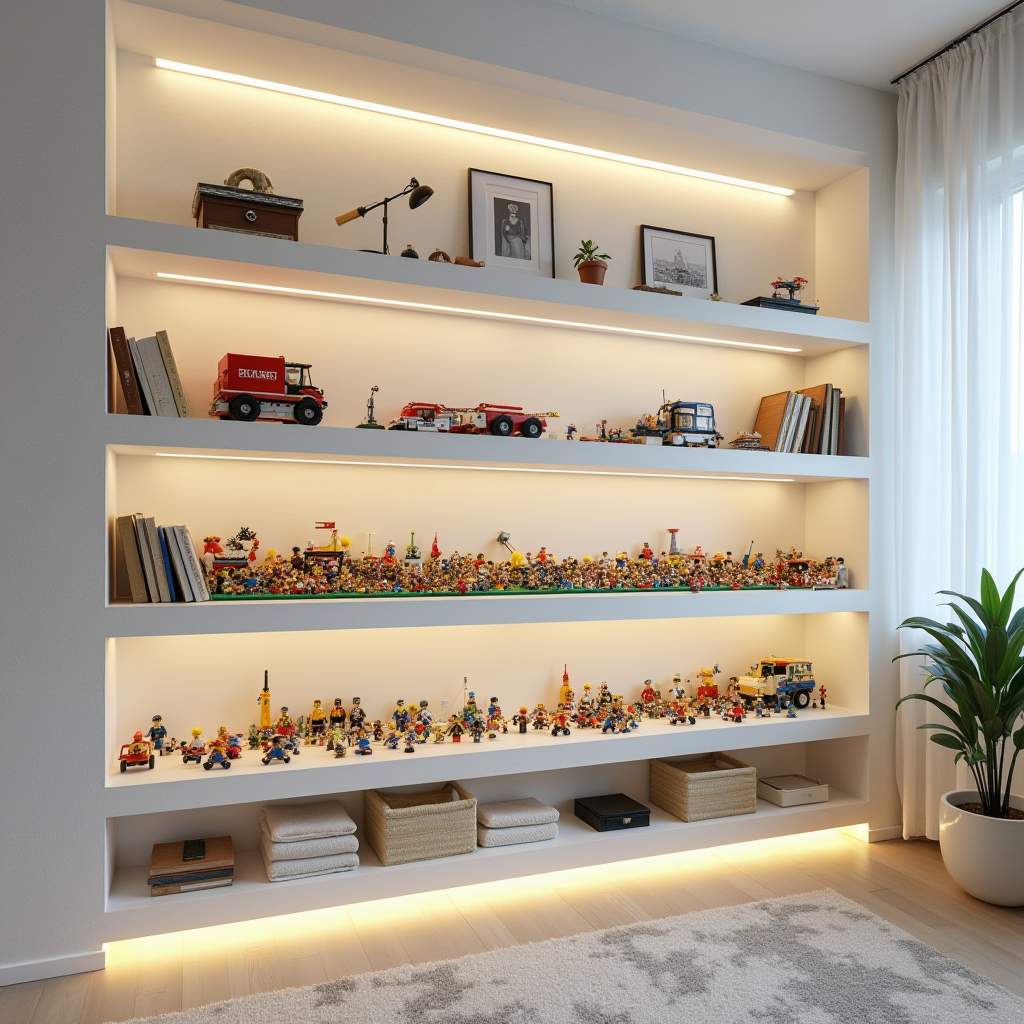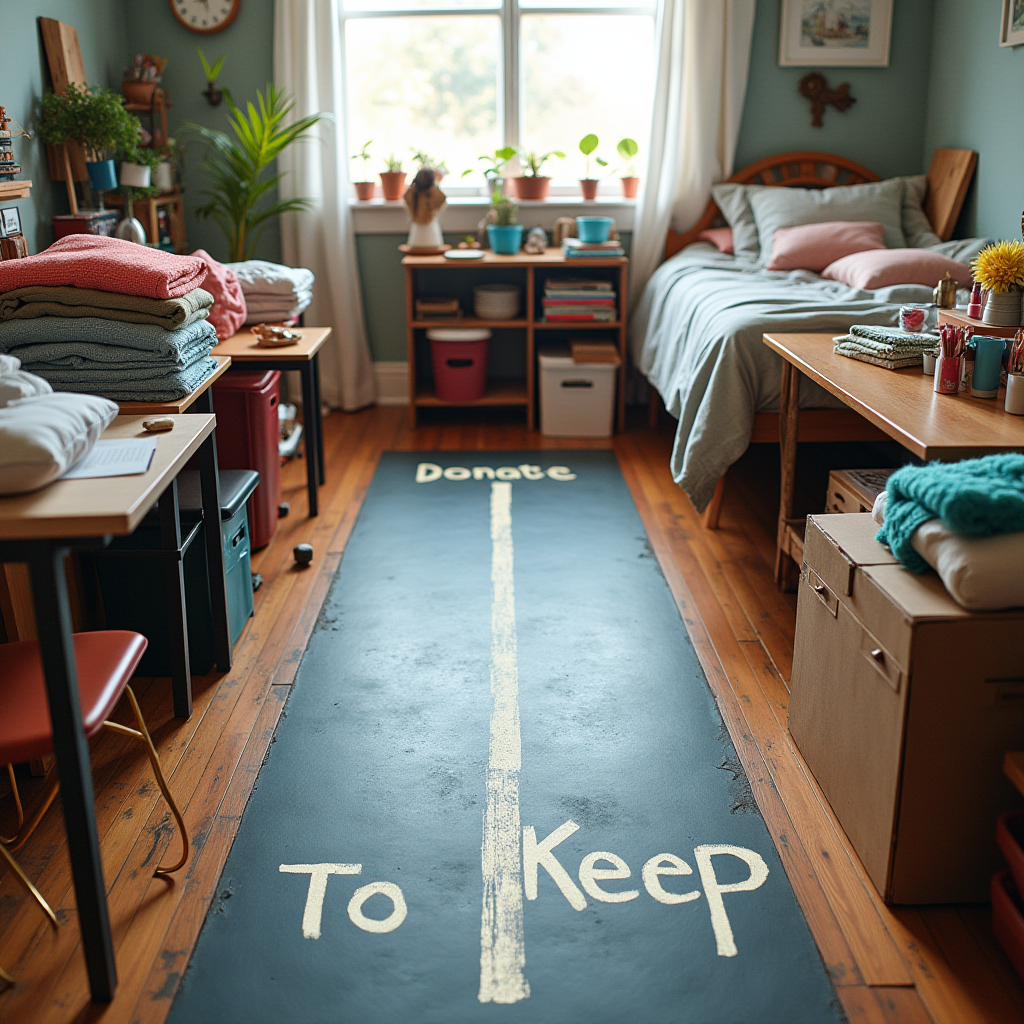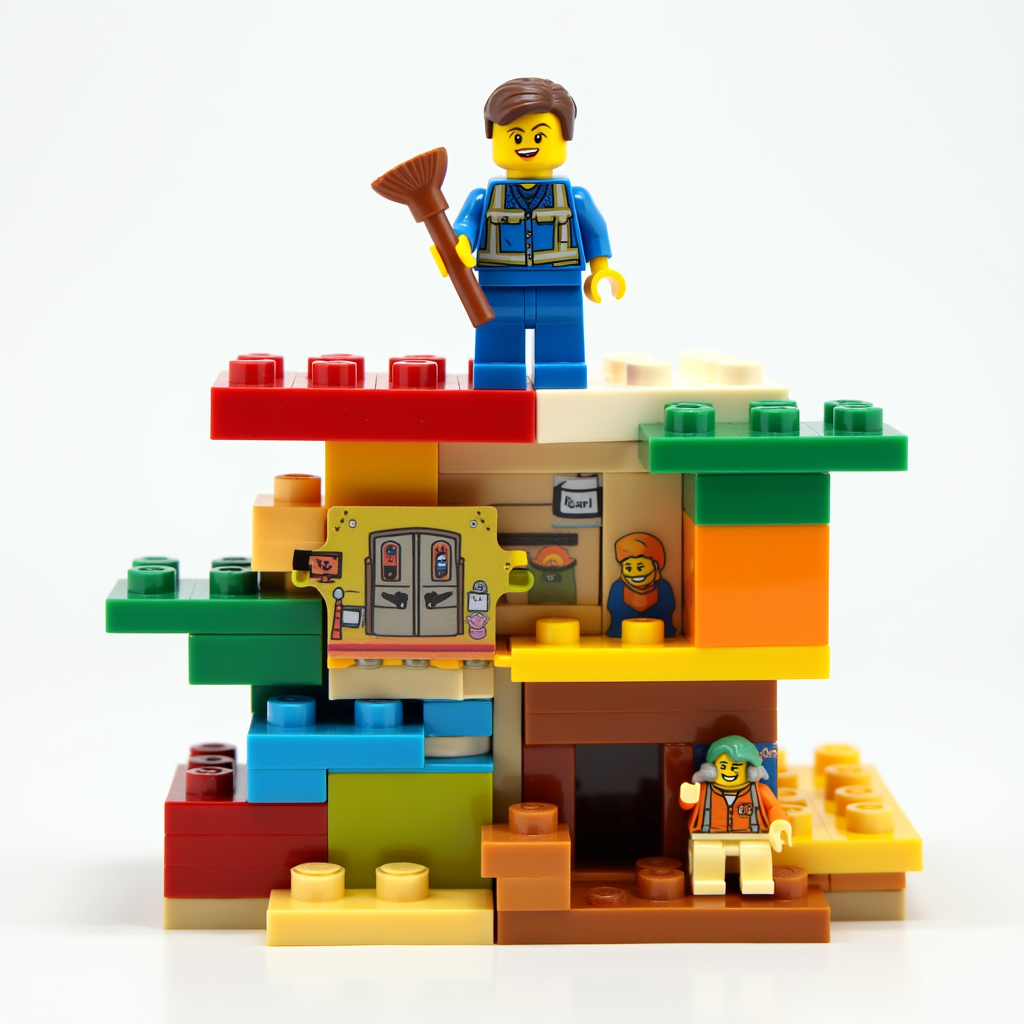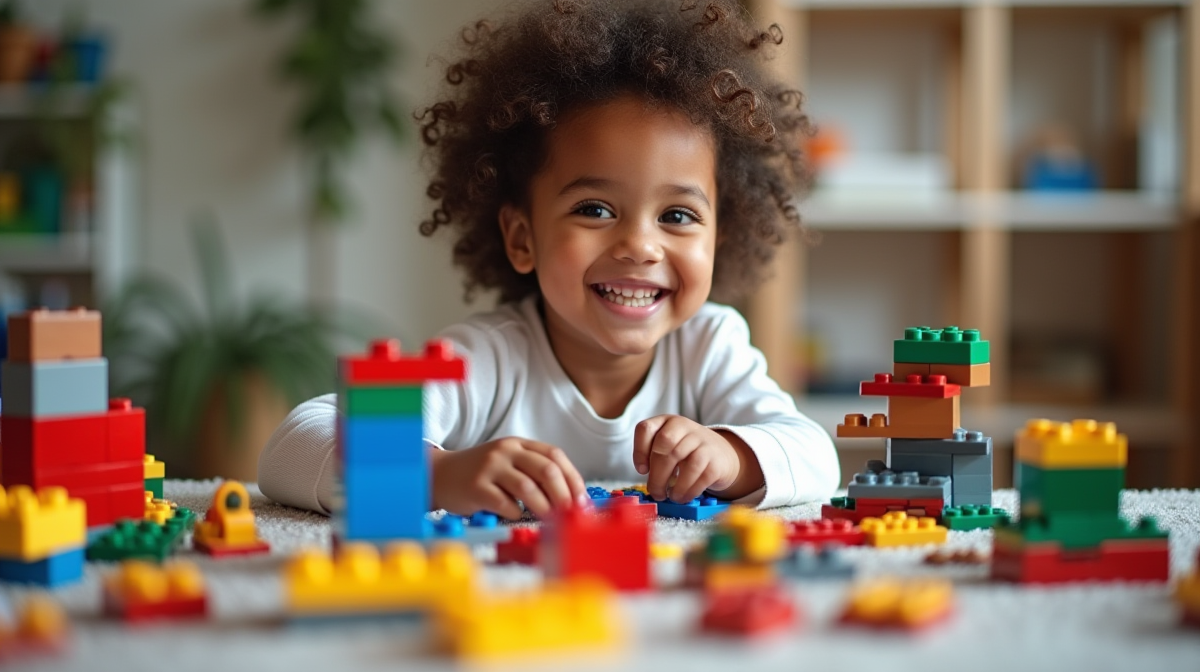Introduction
Having a vast LEGO empire comes with its fair share of challenges, notably dealing with colossal and chaotic accumulation. A major problem many LEGO enthusiasts face is knowing which blocks to keep and which ones to let go of. This culminates in disorganized piles that make finding specific pieces a near-impossible quest, dampening the joy of building and turning it into a frustrating ordeal. Moreover, a space crowded with unnecessary LEGO can stifle creativity and cause unnecessary stress. But worry not! By applying the principles of renowned organizing expert Marie Kondo, we can help turn this chaos into a harmonious LEGO haven. This guide will assist you in making enlightened decisions about what to keep, what to donate, and how to spark joy with tidy, intentional builds. Embrace minimalism without suppressing your creativity and build your LEGO empire on a foundation of joy and simplicity.
Understanding Marie Kondo’s Method
Marie Kondo, a best-selling author and renowned tidying expert, has a simple criterion when it comes to decluttering anything: “Does it spark joy?” If the answer is yes, keep it. If it’s no, thank it for its service and let it go. Her method can be applied to every object in our lives, including our beloved LEGO collections. The question now is, how do we apply her method to our collections and still keep our sanity?
Identify what sparks joy
Marie Kondo’s method starts from a full-on onslaught of sorting and discarding items, building by building and brick by brick. To begin, gather all your LEGO pieces and start deciding which ones ‘spark joy’. According to Kondo, joy can range from a simple smile to a feeling of ‘clicking’ with an object. The interpretation is personal.
In my own experience, this was the hardest part of the process. I was attached to all my LEGO sets. However, after a couple of rounds of decluttering, I came to understand that some sets, especially those built with my children creating fond memories, brought me joy, while others, like the ones collecting dust, did not.
Donate purposefully
The next step is the separation; the thank you and goodbye. Much like me, you may feel a pang of guilt about having to donate some LEGO sets. However, the idea is to pass them on to a new owner who will enjoy them just as you did. Children’s charities, schools, and community organizations would appreciate your donation. It’s amazing what joy secondary use brings.
Organize to spark more joy
With the minimized collection, now comes the organization. LEGO’s website suggests categorizing your remaining collection by set, theme, or color. I personally found organizing by color to be visually soothing.
Enjoy building with ‘joy sparking’ collection
Finally, with a decluttered and organized LEGO collection, sit back and enjoy a calm, joy-sparking build. You’ll find building with your minimized collection more rewarding and peaceful since it’s composed of only the LEGO pieces that truly make you happy.
Reflecting on my experience, Marie Kondo’s method made me confront the sentimental value attached to owning and hoarding pieces and helped focus on what truly mattered to me.
The art of decluttering and organization is a mindful process that not only encompasses the physical aspect but also the mental. By adopting Marie Kondo’s method, you will find building with LEGOs more enjoyable with less mess. It may seem overwhelming at first but once you’re done, you’ll realize it’s a small price to pay for a cleaner, more organized, joy-sparking LEGO collection.

Applying Kondo Principles to Your LEGO Collection
Marie Kondo is a name synonymous with the art of tidying up. This decluttering guru believes in retaining the things that ‘spark joy’ in your life and letting go of all the rest. You may already apply Kondo’s philosophy in your everyday life, The KonMari Method, to streamline your wardrobe, tidy your kitchen or sort your bookshelves. But have you ever considered it could be used for your LEGO collection as well? Believe it or not, following Kondo’s principles can help reignite your love for LEGO and manage your valuable assortment with ease.
Does it spark joy?
Marie Kondo believes in the principle of retaining only those items that ‘spark joy’. This applies to your LEGO sets too. Ponder and recall the times you’ve spent building your issues. If something brings back fond memories, keep it. For example, I realized my old LEGO Star Wars collection always managed to make me smile, while some other sets didn’t spark the same joy. This process helped me discover what truly mattered in my collection.
Keep, Sell or Donate
By design, LEGOs can foster relationships. One such experience was when I shared my old LEGO Ninjago sets, which I no longer needed, with a neighbor’s kid. It helped me declutter my collection and brought joy to a young fan. So, divide your LEGOs into three boxes – Keep, Sell, Donate -depending on their sentimental value and usage.
Tidy builds, clear mind
The most surprising insight I gained from applying Kondo’s principles to LEGOs was the therapeutic peace from the tidying process. As any LEGO fan knows, sorting bricks can take hours but it’s also a great way to relax, focus the mind, and release stress. Marie Kondo believes in the healing power of a tidied space and it’s true – a well-kept LEGO collection is a joy to look at and rekindle creativity.
Embracing the KonMari method with your LEGO collection does not mean you have to skim your collection down to a handful of plastic pieces. It simply means thoughtful retention: keeping the sets that make you happy and sharing the ones that could bring joy to someone else. Remember, the goal is not simply reduction, but creating space for more joy and a closer connection with your favorite hobby.
And who knows, this activity might help you uncover that long lost LEGO brick you had been searching for! So, go ahead and try it out – you might just rediscover why you fell in love with LEGOs in the first place. After all, as Marie Kondo says – “The question of what you want to own is actually the question of how you want to live your life.”

Deciding What to Keep and What to Donate
When taking a minimalist approach akin to the Marie Kondo method towards your LEGO collection, it’s crucial to make mindful decisions on what to keep and what to donate. This involves asking oneself whether a particular LEGO set, piece, or model sparks joy.
Identifying Joy Factors
Every LEGO collector has a unique ‘joy factor,’ the sparked feelings when handling, building, or simply viewing particular LEGO pieces. For me, it was the ‘Technic Bugatti Chiron’ model that truly sparked joy. Its intricate design and the satisfaction I felt piecing together each element was unparalleled. However, the LEGO ‘City Arctic Supply Plane’ didn’t elicit the same elation. This understanding of what brings you joy can streamline your sorting process.
Pieces Vs. Sets
When considering donation, an essential aspect to ponder is whether to donate pieces or entire sets. While Bricks4Kidz, a national organization that uses LEGO bricks to teach children, is open to individual pieces and bulk LEGO donations, they prefer complete sets. On the other hand, many charities, thrift stores, and hospitals are appreciative of LEGO donations in any form.
In 2020, LEGO Group reported a 5% annual sales growth, with adults making a substantial part of their consumer base. However, not everyone can afford to purchase these sets. Sharing your unwanted pieces and sets can provide joy to less fortunate LEGO enthusiasts.
Value Vs. Joy
It’s necessary to distinguish between the value that a particular set might hold versus the joy it brings you. For instance, even though I own a rare LEGO ‘Star Wars Millennium Falcon’ set, it sits idle in my closet because it doesn’t kindle the same excitement as the ‘Harry Potter Hogwarts Castle’ does. Despite its market value, it’s ready for donation because it does not ‘spark joy.’
Being Mindful
Minimalism is not about sacrificing what you love but being mindful of what truly matters. For example, a LEGO Duplo set that has been with me since my childhood holds sentimental value and sparks joy in subtler ways than the ‘technic’ models do, so it’s an absolute keeper for me.
Lessons I’ve learned through my experience
Through the years, I’ve learned that being a successful collector doesn’t mean having the most extensive collection. Instead, it’s about refining your assortment to retain those pieces that bring genuine delight. Consumed by the need to ‘collect then all,’ I once ended up with a chaotic heap of LEGO sets that caused more stress than joy. Decluttering my life (and my LEGO collection), I found that less could indeed be more.
As you embark on your LEGO minimalism journey, remember that each person’s journey will look different. Understanding what ‘sparks joy’ for you is the key to deciding what you keep and what you donate.
Keep your LEGO collection tidy and joyful. Remember, the aim is not to have the most massive collection, but a collection that brings you the maximum joy.

Creating Joy with Organised Builds
Understanding Your LEGO Collection
The first step in bringing joy from organized builds begins with understanding your LEGO collection. It’s easy to collect countless sets and individual pieces over time that you find intriguing. But, like Marie Kondo, we need to scrutinise each piece for its real value in your life. Does it spark joy? Does it inspire you to engineer your own world? If not, it might be time to let it go. I recall a personal experience where I continued holding on to a huge Star Wars set that I’d never assembled. Eventually, I donated it to a local school where it became a grand project for the students. Donating unused sets not only declutters your collection but also extends the joy of LEGO to others.
Love It, Keep It
Learning which pieces to keep can be a challenge. The rule of thumb I’ve followed, inspired by Kondo, is quite simple: If you love it, keep it. Over the years, my LEGO collection has scaled down from over a thousand pieces to around 500. This was not an overnight process, mind you. It took time, patience, and a lot of honest self-reflection. With fewer pieces, my builds became more innovative. I started creating more coherent structures that fit well within my collection.
Organising Your Collection: A Tidy Build is a Happy Build
A crucial step in creating joy with organised builds is maintaining a tidy aspect of your collection. Kondo highlights the importance of having things in order to invite calmness, and the same is true for LEGO. Categorise your Lego pieces by their function, size, or colour, based on your preference. I keep my bricks, plates, and wheels in separate containers. This organised structure has helped me significantly improve the time spent on my builds and allows for a smooth building process.
Embracing Minimalism: Let Your Creativity Shine
Minimalism has a different meaning for everyone. Similarly, every LEGO enthusiast has a different vision. With an organised LEGO set, less becomes more. Removing what you don’t use can foster creativity on a whole new level. A statistic from the LEGO Group (Big Builds) shows that even with just about 50 pieces, builders can create fantastic creations.
The Joy of Building
Ultimately, LEGO is about the joy of building. Like many, my first simple LEGO build led to an enduring passion for creativity and engineering. The joy of building something from scratch, of seeing a pile of random pieces transform into a masterpiece is unparalleled. And the satisfaction of maintaining an organised, curated LEGO collection that sparks joy and creativity every time you glance at it is even more rewarding.
Remember, LEGO building is more than just a hobby. It’s a medium of self-expression and a testament to our imagination. So, find joy in every build and let the love for LEGO continue.

Incorporating Minimalism into Your Lego Building
Minimalistic design can create a huge impact, especially in LEGO building. As the renowned Japanese organizing consultant Marie Kondo espoused, items should spark joy in your life. This guiding principle, when applied to your LEGO building, can result in tidy, inspiring, and impressive creations. Below are some useful tips on how to incorporate minimalism in your LEGO building:
Apply the KonMari Method to Your LEGO Collection
It’s easy to accumulate LEGO pieces over time, so your first step should be to declutter your collection. More in line with the KonMari Method, sieve through your LEGO and keep only those parts that spark joy. During my initial decluttering, I found that I had a massive collection of nearly 5,000 LEGO pieces. I was surprised how many of them just did not inspire me. After a thoughtful culling, I saved only around 2,000 pieces – the ones that truly sparked joy and creativity in me. I donated the rest to a local toy drive.
Keep Your Creation Simplistic yet Elegant
Building a minimalistic LEGO design doesn’t necessarily mean you need to use fewer pieces. It’s more about focusing on simplicity and sophistication. Keep lines clean and colours consistent, and avoid over-complicating your designs. It’s a challenging endeavour, but mastering the art of doing more with less can result in impressive LEGO creations. One of my most cherished models is a monochrome rendition of Frank Lloyd Wright’s Fallingwater, executed in just 800 LEGO bricks.
Organise Your LEGO Collection
Part of enjoying LEGO as a medium is having an organised space. A well-regimented collection means you’ll spend less time rummaging for that perfect piece and more time building. You might consider arranging your collection by colour, size, or shape based on the method that sparks most joy for you. I experimented with multiple arrangements and finally found that sorting by shape worked best for me.
Spare Regular Time for LEGO Building
A minimalistic lifestyle isn’t just about possessing fewer things but also carving out quality time for your passion. Dedicate a specific time daily or weekly to immerse yourself in LEGO-building – this adds a joyful structure to your life.
One unexpected benefit I found in applying minimalistic principles to my LEGO hobby was an overall improvement in my life’s quality. On average, our minds make over 35,000 decisions per day. By reducing the number of choices – like selecting LEGO pieces – we effectively lower the decision-making load and keep our minds clearer.
It seems ironic that by reducing my LEGO collection to essentials, I’ve been building more creatively than ever. Similar to LEGO’s block-based building system, minimalism at its core is about starting with the simple and building on it, preparing an exciting journey of endless possibilities. This is one of the spirit of LEGO’s official motto, “Det bedste er ikke for godt,” which translates to “Only the Best is Good Enough.” In other words, make every piece count and you will find joy in your minimalistic LEGO building.”
Remember, Marie Kondo’s mantra, “Does it spark joy?” is an important question if you wish to reach a happy balance between your LEGO collection and your desire for minimalistic space.

Maintaining Your De-cluttered LEGO Empire
Maintaining your de-cluttered LEGO empire is about more than just tidying up; it is also essential to ensure you continue to derive excitement and joy from your collection. Applying the Japanese art of tidying up, a la Marie Kondo, can do wonders to uphold the attractive appeal of your LEGO builds. Incorporating a degree of minimalism, you can discern the pieces worth keeping, recognize ones for donating, all while sustaining an organized collection.
Identifying What Triggers Joy
Inspired by Marie Kondo, the first step involves evaluating which portions of your LEGO collection ‘spark joy’. This measure helps decide what stays and what parts can be donated or discarded. For example, my pilgrimage to LEGO minimalism had me parting with older sets, ones I had outgrown. A particularly vivid memory is choosing to donate my cherished ‘LEGO Pirates of Barracuda Bay’. It was tough, but knowing it would bring someone else joy was gratifying.
Establishing an Organisation System
Once the joy-sparking LEGO pieces are sorted, it’s paramount to put in place an organization system. I learned this the hard way when I invested in hundreds of LEGO bricks, only to discover I couldn’t find the pieces I needed amidst the chaos! Now my LEGO collection hinges on a categorization layout based on colors, shapes, and set types. For instance, I store red bricks separately from blue ones, small pieces apart from big ones, and those from ‘Star Wars’ theme are segmented from ‘Harry Potter’.
Optimizing Space
Your LEGO empire needn’t spill over large spaces. Marshaling my LEGO army into just a couple of shelves was my biggest victory in taming the LEGO explosion. Investing in stackable, transparent storage boxes from The Container Store was an efficacious way to optimize space.
Regular Maintenance
Decluttering isn’t a one-time event but regular housekeeping. On a monthly basis, check if your categorization method is working. Time and patience is crucial in keeping your LEGO empire decluttered. As they say, Rome wasn’t built (or tidied!) in a day.
In wrapping, it’s essential to remember that everyone’s LEGO empire is unique. Your decluttering journey might look different from mine, and that’s okay. The essence of minimalism is about making space for what truly matters to you. And if that’s a meticulously cataloged, well maintained, joy-sparking collection of LEGO, then you’re on the right track.

Conclusion
In the spirit of collective elevation and with the steadfast determination to build an uncluttered, joy-sparking LEGO empire, the journey through this guide should have equipped you with meaningful insights and practical tips. By embracing the Kondo-inspired minimalism to your LEGO collection, you are not just tidying up; you’re fundamentally reshaping your LEGO experience.
This new journey doesn’t end here. It’s the beginning of indulging in an ongoing, exhilarating cycle of evaluation, appreciation, and decision-making. We invite you to continually revisit your collection, see what still sparks joy, and what you can pass on to bring joy to someone else. Let’s look at this not as getting rid of items, but as holding space for fresh burst of inspiration, further empowering the creative extensions of your being.
By choosing to recycle or donate your LEGO, you contribute to a larger narrative of shared joy and conscious consumerism. Who wouldn’t love a world gleaming with the vibrance of joy-ignited creativity and care?
Moving forward, we recommend joining online LEGO communities such as the LEGO Ideas website and My Own Creations (MOCs), where you can share your delightful creations, collaborative builds and gather new inspirations that align with your joy-sparking journey.
Remember, it’s all about balance; the harmony between your love for LEGO, the physical space they inhabit and the joy they bring. And for those times you might struggle? Remember Marie Kondo’s words: “The question of what you want to own is actually the question of how you want to live your life.”
Your LEGO collection has the potential not only to be a source of pure joy, but also a tangible reflection of your personal growth and transformation. Here’s to a tidier, happier LEGO empire, and even more importantly, a tidier, happier you.
May your life continue to be built beautifully, one LEGO brick at a time. Let’s savor this joy-inducing playful minimalism – after all, the magic of LEGO lies in the thrill of creation, the story each piece tells, and the joy that comes forth. Happy building!

